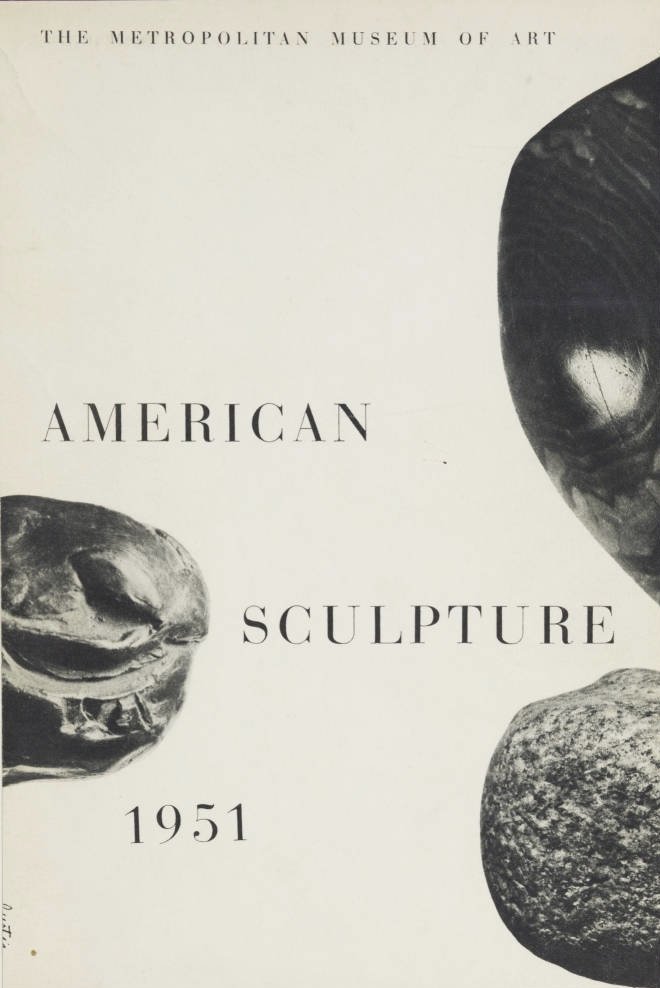Alexander Meller
ALEXANDER MELLER (American, 1920-2002)
Alex Meller sitting among his sculpture, ca 1950
Alexander Meller was a Surrealist painter, most often compared to Roberto Matta, but similarities to Wilfredo Lam can be seen in his work as well. His unusual futuristic style with elements of Cubism, combine to create a World that is at times wondrous and disconcerting.
Meller, born Hanany Srule Chaimov Hanek Meller on January 6, 1920 in Harbin, Manchuria, emigrated to the United States in 1937. Once arriving in the United States his family initially settled in Beverly Hills and later would move to Sherman Oaks, California. His parents owned a dress shop in Los Angeles, and it appears through that connection he became acquainted with Edith Cox Eaton, a successful British couturier in San Francisco. Edith had purchased the historic ranch home of Juana Briones de Miranda in Los Altos in 1925, and around 1940 it became known as an arts colony and family home, with artists such as Marjorie Eaton (Edith’s stepdaughter), Lucretia Van Horn, and Louise Nevelson spending significant time there. Meller listed Edith’s home as his address of record when he volunteered to join the Army in 1941, so it can be surmised he had spent some time there. While serving in the Army he became of Citizen of the United States. He was honorably discharged in 1945.
The Metropolitan Museum of Art, “American Sculpture 1951”, Exhibition Catalog
Meller was one of 101 artists selected for the “American Sculpture 1951” exhibition at the Metropolitan Museum of Art, which ran from December 1951 through February 1952. Other exhibitors included Bernard Rosenthal, Leo Amino, Viktor Schreckengost, Alexander Archipenko, and Alexander Calder, among others. His contribution to the exhibition was a 28-1/2” steel sculpture entitled The Tango, and it was displayed with a $1,500 list price (an equivalent value would be over $17,000 today!)
On the heels of his show at the “The Met”, Meller exhibited the same sculpture, The Tango, at “Art Today”, an exhibition sponsored by the Los Angeles Art Association. Art critic Jules Langsner comments, “For some reason, few California sculptors have taken to direct welded abstractions, so it’s a pleasure to report the emergence of Alexander Meller who has whipped out a virile and handsome construction, titled Tango, out of gears and other metal units.”
The following month, Meller had a welded metal sculpture Tomcat selected for the “1952 Annual Exhibition, Artists of Los Angeles and Vicinity” at the Los Angeles County Museum (LACMA). Art critic Arthur Miller mentioned that this work was “witty”, while finding most of the other exhibitors works included showed a “lack of creativity” despite a “high level of workmanship.”
Felix Landau Gallery Advertisement
While the LACMA exhibition was going on and just a few months after the exhibition at “The Met” ended, came a one-man show at the very influential Felix Landau Gallery, in what would become an emerging art scene known as “gallery row”, located on La Cienega Boulevard in Los Angeles. Meller’s work included wood and metal sculpture, as well as his oil paintings.
Art critic Jules Langsner announced the upcoming show in Art News (now ArtNews) proclaiming Meller’s “immense vitality” and certain pieces “virile, ingenuously clever”, while stating that some work “indulges lurid fantasy to the point of confusion”, and mentions that “one oscillates between an infectious exuberance and the depressing realization that something has gone askew.” He finds other work to display “luminously transparent forms and activated deep space, close to Matta in spirit, fluid color and malleable shapes, that are effective if disquietingly so.”
Alexander Meller, The Tango, Metal Sculpture, Height 28 1/2’
Art critic Barbara Barstow Cobb reviewed the opening and commented that “Mr. Meller’s prolific oils, which show the neat precision of industrial designing and architectural draughting, predominant. He has marvelous facility with prismatic effects and a distinctly different approach to cubism.” She went on to comment that “in spite of his full and ‘busy’ canvases, they suddenly assume their proper proportions and seem quite clean and harmonious - almost sensible; this, in a prevailing age of modern disharmony. Meller’s sense of humor is at all time apparent, with his slyly hidden nudes, his gyrating figures, his through the looking glass ‘out of this world’ canvases.” She finishes, marveling at his written signature as “a delight to these tired and myopic eyes. It is large, proud, and entirely distinguishable. Would that other artists would write likewise.”
Ironically, the exhibition that followed Meller at the Landau Gallery featured John McLaughlin, a minimalist and hard-edge painter - certainly a counterpoint to Meller’s fanciful pieces. As Langsner mentioned ”Landau seems to be running the gamut this summer, jumping from the impetuosity of Meller to the austerity of John McLaughlin”. Aside from McLaughlin, Landau featured numerous notable artists over the years including Francis Bacon, Egon Schiele, Gustav Klimt, Pablo Picasso, Peter Voulkos, Henry Moore, Sam Francis, and Richard Diebenkorn, among many others.
Following this flurry of activity, over a relatively short period of time, not much is found on Alexander Meller. He did participate in Chaffey Community Art Association exhibitions in Ontario, California in 1953 and 1956, alongside artists such as Arthur Ames, Paul Darrow, Helen Lundeberg, John McLaughlin, Richard Diebenkorn, Lorser Feitelson and Millard Sheets.
Alexander and wife Lila move to Banning, California and then to Whitewater, California years later. They apply for and receive copyrights for two pieces of music they had written in 1970 and 1984.
For unknown reasons, Meller became obsessed in having his name changed legally from Alexander Meller to Alexander Adam Dare. He began signing some paintings with the signature “Dare”, beginning in 1985. Numerous copies of the Landau Gallery exhibition review were found with his name redacted and changed to Alexander Dare. Copious notes and letters document mutiple attempts over a two year period, between 2000-2002, to complete this process. The letter confirming that his request to have his name changed was completed finally arrived on April 15, 2002. Six months later, on November 1, 2002 after a very brief illness, Meller died of lung cancer. His occupation listed on his death certificate was real estate investor, which is indicated to have been his occupation for the past 40 years.
Alexander Meller (aka Alexander Adam Dare) is buried in Forest Lawn Memorial Park in Cathedral City, California. His wife Lila is buried next to him having subsequently passed away in 2006. No known survivors remain.
Exhibitions:
The Metropolitan Museum of Art, New York; “American Sculpture 1951”, December 7, 1951-February 24, 1952
Los Angeles Art Association, Los Angeles, California; “Art Today”, May, 1952
LACMA (Los Angeles County Museum of Art), Los Angeles; “1952 Annual Exhibition, Artists of Los Angeles and Vicinity”, June 28-August 10, 1952
Felix Landau Gallery, Los Angeles, California; One-Man Show, July 7-26, 1952
Chaffey Community Art Association (Chaffey Community Museum of Art), Ontario, California, “13th Annual Contemporary Painting Exhibit”, October 24-November 1, 1953
Chaffey Community Art Association (Chaffey Community Museum of Art), Ontario, California, “16th Annual Invitational Exhibit”, October 21-28, 1956
Press:
The Los Angeles Times; “Sculptors Get Bid to Exhibit”, November 18, 1951
Art News; “Art news from: Los Angeles”, by Jules Langsner, May, 1952: vol. 51, issue 3, page 49
Art News; “This summer in: Los Angeles”, by Jules Langsner, June-August, 1952: vol. 51, issue 4, page 89
The Los Angeles Times; “Art: Creativity Lacking in Museum Exhibition”, by Arthur Miller, July 6, 1952
The Los Angeles Times; “Art: Art Events This Week”, July 13, 1952
The Arts Magazine, Los Angeles; “One-Man Show at the Landau Gallery”, by Barbara Barstow Cobb, August, 1952
ART D’Aujourd’hui (Art of Today), Paris; “La Sculpture Abstraite Aux U.S.A. (Abstract Sculpture in the U.S.A.)”, by George L. K. Morris , January, 1953
The Pomona Progress Bulletin, Pomona, California; “Gallery Talks Slated at Chaffey Art Show”, October 24, 1953
The San Bernardino County Sun, San Bernardino, California; “Sculpture Exhibit Will Be in Charge of Noted Pamona Artist”, October 19, 1956




